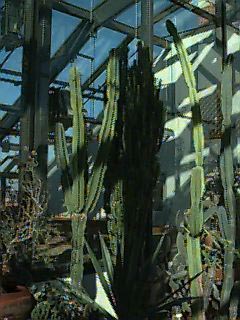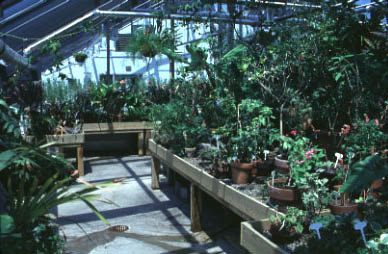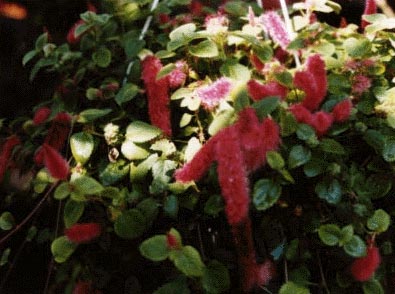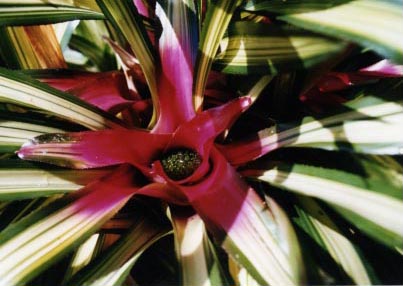
Flora Eyster-Newburgh, Caretaker
Mark Spiro, Supervisor

|
Greenhouse Flora Eyster-Newburgh, Caretaker Mark Spiro, Supervisor |
|
Open Monday through Friday from 9am to
4pm Biology Museum Collection - Biology 409 |

|
The Biology Department has three greenhouses, an approximately 1,800 square foot roof-top museum collection, a 1,200 square foot roof-top research house, and a 1,300 square foot research house at the edge of campus. The museum collection contains a desert area, a wetlands section, and a rain forest section. Xeric (dry) adapted plants have many structural adaptations including stem succulence, vertical ribs that allow expansion or contraction as the water content increases or decreases, leaf succulence, and a dense covering of hair reflects sunlight and cuts down water loss. The spines and thorns on these plants almost certainly evolved in response to predation by thirsty desert animals. Many of the plants shown here are not closely related, rather in the process of adapting to arid regions these plants from several phylogenetic groups have converged on similar structural forms. |
| The museum greenhouse's "tropical forest" contains palm-like cycads, ferns, vines, and many broad-leaved flowering plants. Bucknell students use the museum greenhouse to discover details of flower structure and function as well as adaptation of plants to their environments. Students in the advanced Plant Systematics course are able to see living plants from all over the world. |

|
| Acalypha hispida (Euphorbiaceae)(below) is an example of one of the over 400 plants in the Biology museum collection. Plants flower at all seasons making the greenhouse a wonderful place to visit between classes. Students interested in plant propagation volunteer and learn details of maintaining a large University collection while working the greenhouse's caretaker. The greenhouse attracts large crowds on Parent's Weekends. |

|
| The museum collection contains many epiphytes or "air" plants including staghorn ferns, tropical pitcher plants, orchids, and the bromeliad, Neoregelia carolinae 'tricolor' shown below. One solution to the problem of obtaining light in a dense rain forest is to grow attached to the trunks or branches of trees. About 25,000 epiphytic species are known with the vast majority being epiphytic orchids. Shade-tolerant epiphytes grow on the trunk or on the lower branches of trees and usually do not have special adaptations for preserving water since they are not exposed to direct sunlight. Shade-intolerant epiphytes, growing in the upper branches of the canopy where they are exposed to the desiccating effect of bright sun and wind, are invariably xeromorphic as shown here. |

|